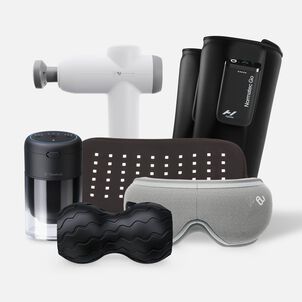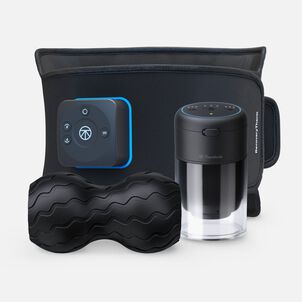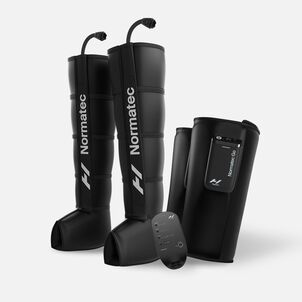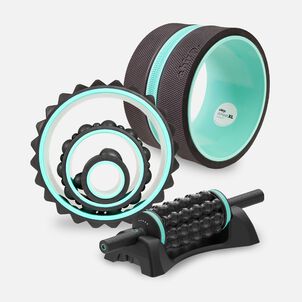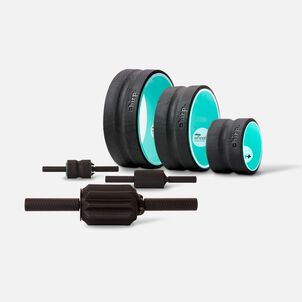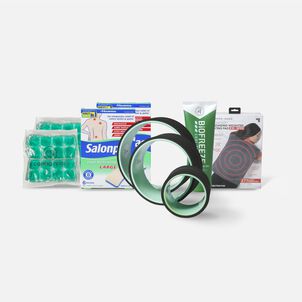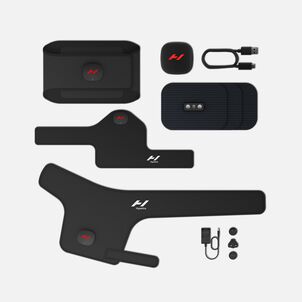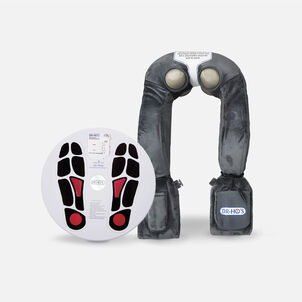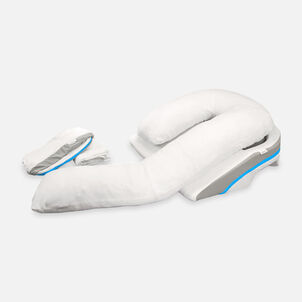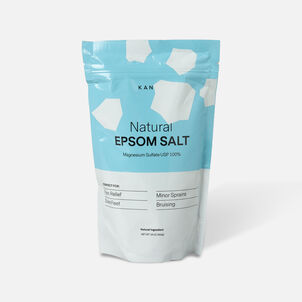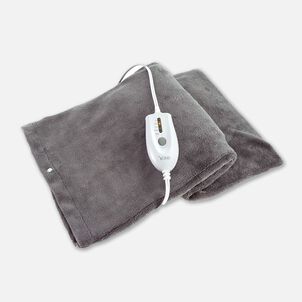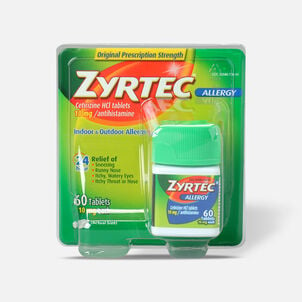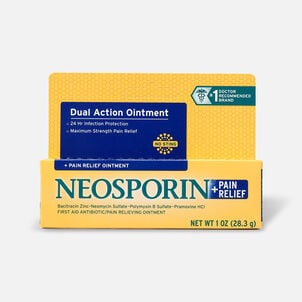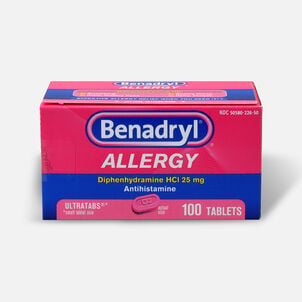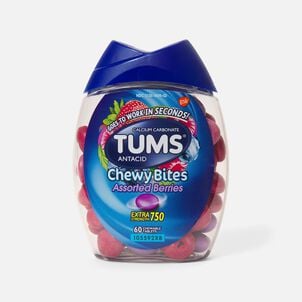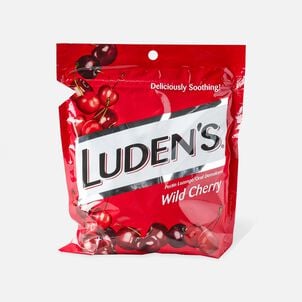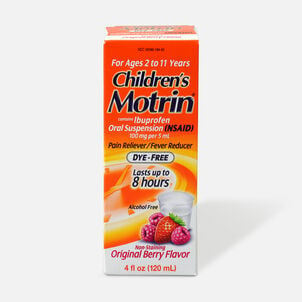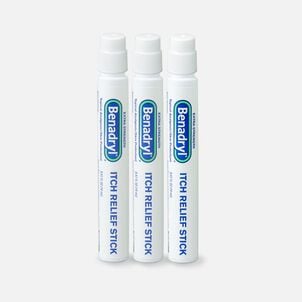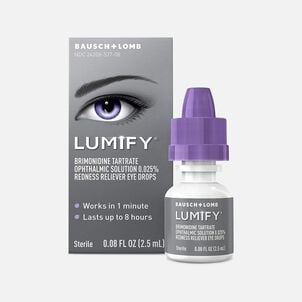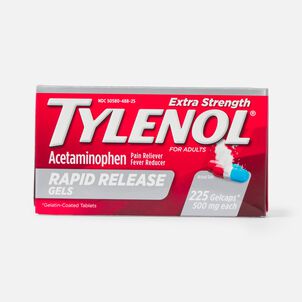Few things are more satisfying than finishing a tough workout. As you grab a towel to wipe the sweat from your forehead, you may be feeling accomplished. But the work is not over yet. The next step is to focus on your post-workout recovery. Whether you are a cyclist, weightlifter, runner, CrossFitter, or yogi, muscle recovery is an essential part of your workout. And your sore muscles may need more than rest.
While recovering after an intense workout is not cheap, you may use your flexible spending account (FSA) for things like pain relief products. Here is how to use your FSA for the ultimate post-workout recovery.
What happens to your body after an intense workout?
Before looking at each of your post-workout recovery options, it may help to understand what happens to your muscles after an intense workout. During a tough workout, your muscles produce lactic acid, which often leads to post-workout muscle soreness. The post-workout recovery process may repair that muscle damage to build strength and prevent injuries. Here are science-backed strategies to support muscle repair after various types of strenuous exercise.
Post-workout recovery tips
Regardless of your preferred type of exercise, experts recommend a few go-to strategies to speed up the muscle recovery process from the National Institute for Fitness and Sport.
- Prioritize getting enough sleep - The first tactic is to make sure you are getting enough sleep. Try to get at least eight hours of sleep every night, especially after an intense workout.
- Drink plenty of water - You should also try to stay hydrated by drinking plenty of water after your workout. The U.S. National Academies Sciences, Engineering, and Medicine suggests drinking a minimum of 11.5 cups (2.7 liters) per day for women and 15.5 cups (3.7 liters) per day for men. You may need more water depending on where you live, your diet, overall health, and your workout intensity.
- Fuel your body with the right nutrition - The third tactic is to fuel your body with the proper amounts of healthy and nutritious food. Your body may need more carbohydrates and protein to recover after a tough workout. You can calculate your daily nutrition needs, including the right amount of carbohydrates, protein, and fat, with this calculator from the U.S. Department of Agriculture (USDA).
1. Weight training
After an intense workout lifting weights, it's essential to focus on your muscle recovery. Luckily, there are some relatively easy ways to expedite muscle repair, manage pain, and improve the recovery process. Here are a couple of recovery options for fitness enthusiasts with a few FSA eligible options mixed in!
- Foam roller - While using the foam roller may be among your least favorite activities, studies show it may offer some post-workout recovery benefits. According to the Journal of Athletic Training, using a foam roller after an intense workout may cut back on delayed-onset muscle soreness. While most foam rollers are not eligible, the TheraBand Pain Relief Foot Roller is an FSA eligible option for post-workout heel pain, tired feet, and soreness.
- Massage - Massage is another way to support muscle recovery after strenuous exercise. Studies show massage may alleviate delayed-onset muscle soreness and improve your muscle performance. You may experience these benefits by working with a sports massage therapist regularly. However, this service is typically not FSA eligible and would require a Letter of Medical Necessity from a physician for reimbursement.
2. Long-distance running
There is nothing like the runner's high feeling many athletes experience after logging some miles. As you cool down after going for a long run, it's critical to refuel your body for post-workout recovery. Here are some options to help repair your muscles faster.
- Tart cherries - As you look for post-workout recovery snacks, you may consider adding tart cherries to your weekly shopping list. A study from the Scandinavian Journal of Medicine and Sports found that tart cherry juice may reduce inflammation and mend your muscle damage after long-distance runs. But these would fall outside of FSA regulations, as food is not an FSA eligible expense.
- Epsom salt bath - A hot bath with Epsom salt may be the perfect way to soothe sore muscles after a long run, especially when you have spent time in the cold.
3. High-intensity interval training (HIIT)
High-intensity interval training (HIIT) workouts have become a popular way to build strength and endurance. These are intense workouts, and without a focus on recovery, you may be more prone to injury. Here are some proven ways to boost your muscle recovery.
- Active recovery - An active recovery involves low-intensity exercise, like walking or yoga, after a strenuous workout. Luckily, active recovery exercise requires a lot less effort than your HIIT workout. The International Journal of Exercise Science says active recovery is one way to promote lactate clearance after a HIIT workout.
- Stretching - A thorough post-workout stretch may be another way to avoid injury. Stretching may prevent your muscles from getting stiff after a HIIT workout. For some added guidance, you may also consider attending a yoga or pilates class. Classes like these would only be FSA eligible with a Letter of Medical Necessity (LMN) from a physician.
4. Resistance training
Resistance training uses weight to work your muscles to improve endurance and reduce body fat. These workouts may include your body weight, resistance bands, free weights, or weight machines. Weight lifting is a form of resistance training. Some beneficial ways to aid your post-workout recovery may include:
Protein supplements - Experts recommend replacing your energy with a workout recovery supplement as quickly as possible. You may want to focus on beverages with added protein and carbohydrates. While they're a great post-workout idea, most supplements aren't FSA eligible without a Letter of Medical Necessity or prescription from your doctor.
Hot and cold compress - When you are experiencing any pain after miles of pounding the pavement, you may try using an FSA eligible hot and cold compress to minimize the swelling or discomfort. If you have an injury, try to resist the urge to start running again until there is no more pain.
5. Circuit training
Circuit training is another popular workout that switches between different types of exercise and targets muscle groups. Like HIIT workouts, improper form and skipping your recovery may lead to an injury (Hospital for Special Surgery). You may enhance your muscle recovery with a few of these tactics.
Post-workout recovery drink - While it's important to hydrate with water, your body may need an additional boost to speed up the recovery process. One popular post-workout recovery drink is chocolate milk. Studies show it may be an optimal mix of carbohydrates and protein to fuel muscle recovery. But again, foods are not covered by your FSA so you'll be covering this one out-of-pocket.
At-home massage - Massage is a great way to soothe your body and add to muscle recovery after a challenging circuit training workout. If you can't visit a massage therapist or prefer to save money, you may try some at-home massage techniques. You may use tools like a massage gun, acupressure mat, or lacrosse balls. The acupressure mat in particular is covered by your FSA.
Don't skip your post-workout recovery
After a long run or tough workout in the weight room, it may be tempting to enjoy some well-earned rest while skipping your post-workout recovery. The recovery process may be just as important as the workout. Here's why: it's a chance to repair muscle tissue, which may promote muscle growth and improve your strength.
Whether you rely on the foam roller, workout recovery supplements, or massage, you are helping your muscles recover, and you may boost your future performance. But ignoring the recovery process may have the opposite effect. You could experience adverse side effects, like extra muscle soreness, or worse, an injury.
-
Thanks for visiting the FSA Learning Center! To stay on top of all FSA news that can affect your health and financial wellness, be sure to follow us on Facebook and Twitter.
Kate Dore
Kate Dore is a Nashville-based personal finance writer and Candidate for Certified Financial Planner™ Certification. She teaches financial literacy with Junior Achievement and writes for Lifehacker, Business Insider, Investopedia, and Credit Karma. You can follow her on Twitter at @KateDore.

